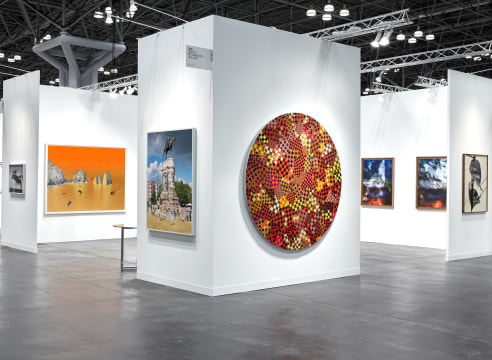
Jared Bark is best known for his performances executed in photo booths between 1969 and 1976. He initially used public booths, but ultimately acquired a secondhand one of his own, complicating the notion of a photo booth as a site of both public and private performance. He was closely integrated with New York’s Downtown Scene, appearing in performance pieces by legendary choreographer Trisha Brown and the Grand Union. Investigating similar issues, Bark’s photographs explore compositional practices including seriality, humor, everyday movement, and chance.
Given the limits of the photo booth format, Bark achieved a remarkable array of images, from narrative work using his own body to minimalist abstraction. Placing the strips of four images side by side, Bark would form gridded fields with the photographs. In one work the artist stands with his back to the camera, altering his distance from the lens in no apparent order, so that his back fills the frame in some images, and in others we see the back of his head and shoulders at varying heights. In other works the strips of images form black and white abstractions, created by blocking out all or part of the booth’s lighted screen.
Born in 1944, Jared Bark received his BA from Stanford University in 1966. The photo booth works were first shown in 1969 in Harold Szeeman's seminal exhibition, When Attitudes Become Form, at the Kunstalle Bern. Subsequently, his work has been featured in exhibitions at numerous international institutions including Institute of Contemporary Art, London; Wadsworth Atheneum, Hartford, Connecticut; Musée de l”Elysée, Lausanne, Switzerland; and Whitney Museum of American Art, New York. His work can be found in numerous public collections including the Albright-Knox Art Gallery, New York; Centre Georges Pompidou, Paris; Michael C. Carlos Museum, Emory University, Atlanta, Georgia; The Guggenheim, New York; Metropolitan Museum of Art, New York; National Gallery, London; Wadsworth Atheneum, Hartford, Connecticut; The Whitney Museum of American Art, New York, and Museum of Modern Art, New York.